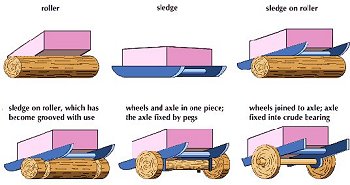danshawen
Valued Senior Member
That's not "self-referential", that's INCONSISTENT, because if x is a number, then x/0 <> x.1/0 = 1 ?
That's not "self-referential", that's INCONSISTENT, because if x is a number, then x/0 <> x.1/0 = 1 ?
If you will notice the same answer is achieved. If 1 is divided by 0 it remains neither greater nor lesser than 1That's not "self-referential", that's INCONSISTENT, because if x is a number, then x/0 <> x.
One (or any number) divided by zero is infinity, which is NOT a number.If you will notice the same answer is achieved. If 1 is divided by 0 it remains neither greater nor lesser than 1
Right, it's a false comparison. One yields a consistent function , the other a "what"? A timeless permittive condition?One (or any number) divided by zero is infinity, which is NOT a number.
Correct. Proportional relationships (equations) speak only to whatever can be determined by proportional relationships, and this by a far shot is not anything like a comprehensive, complete or consistent view of anything.This why an answer of infinity is a disqualifying property of an equation or function in theoretical science. It is mathematically not allowed to perform functions which are mathematically flawed, even as they may be influenced, as in *wave-interference, etc.
But that's modern technology. But after the invention of the axled wheel, carts had heavy wooden wheels, held in place by wood pegs.

http://www.ideafinder.com/history/inventions/wheel.htmBased on diagrams on ancient clay tablets, the earliest known use of this essential invention was a potter’s wheel that was used at Ur in Mesopotamia (part of modern day Iraq} as early as 3500 BC. The first use of the wheel for transportation was probably on Mesopotamian chariots in 3200 BC. It is interesting to note that wheels may have had industrial or manufacturing applications before they were used on vehicles.
Indeed. With the thousands of potter's wheels in existence in the Paleolithic Era (the early Stone Age: before agriculture), it's commonly assumed that every now and then one of them was accidentally dropped--or thrown in anger--and began rolling down an incline. The speed at which it could roll must surely have caused the more curious members of the tribe to wonder if the phenomenon couldn't somehow be put to work.the first wheel for which we have evidence was a potter's wheel (with a bearing), not a wheel used for transport.
